Rotator Cuff Tear
The rotator cuff is a group of four muscles that come together as tendons to form a covering around the head of the humerus. It is responsible for keeping your shoulder in its socket and helps to lift and rotate your arm. When one or more of the rotator cuff tendons are torn, the tendon is no longer fulled attached to the head of the humerus.
Causes
There are two main causes of rotator cuff tears: injury and degeneration.
Acute tear
If you fall down on your outstretched arm of lift something too heavy with a jerking motion, you can tear your rotator cuff. This type of tear can occur with other shoulder injuries, such as a broken collarbone or dislocated shoulder.
Degenerative Tear
Most tears are the result of a wearing down of the tendon that occurs slowly over time. This degeneration naturally occurs as we age and can be attributed to repetitive stress, lack of blood supply and bone spurs.



Symptoms
Tears that happen suddenly, such as from a fall, usually cause intense pain. This may be accompanied by a snapping sensation and immediate weakness in your upper arm. Tears that develop slowly due to overuse also cause pain and arm weakness. Overall, the most common telltale signs of a rotator cuff tear include:
- Pain at rest and at night, particularly if lying on the affected shoulder
- Pain when lifting and lowering your arm
- Weakness when lifting or rotating your arm
- Crackling sensation when moving your shoulder in certain positions
Treatments
OKC Orthopedics Sports Medicine is committed to helping patients with rotator cuff tears return to the highest level of activity possible. Our team of orthopedic surgeons, physical therapists and athletic trainers work together to tailor a treatment plan to each patient’s needs and goals.
In most patients, non-surgical treatment options can relieve pain and improve function over time. However, if your pain does not improve or you use your arms for overhead work or sports, surgery may be the best option. Our orthopedic surgeons are experts in shoulder arthroscopy, a minimally invasive procedure in which small instruments and a thin, flexible medical device with a camera pass through an incision the size of a small Band-Aid. After surgery, our physical therapists guide each patient through a personalized rehabilitation program to restore strength and mobility.


